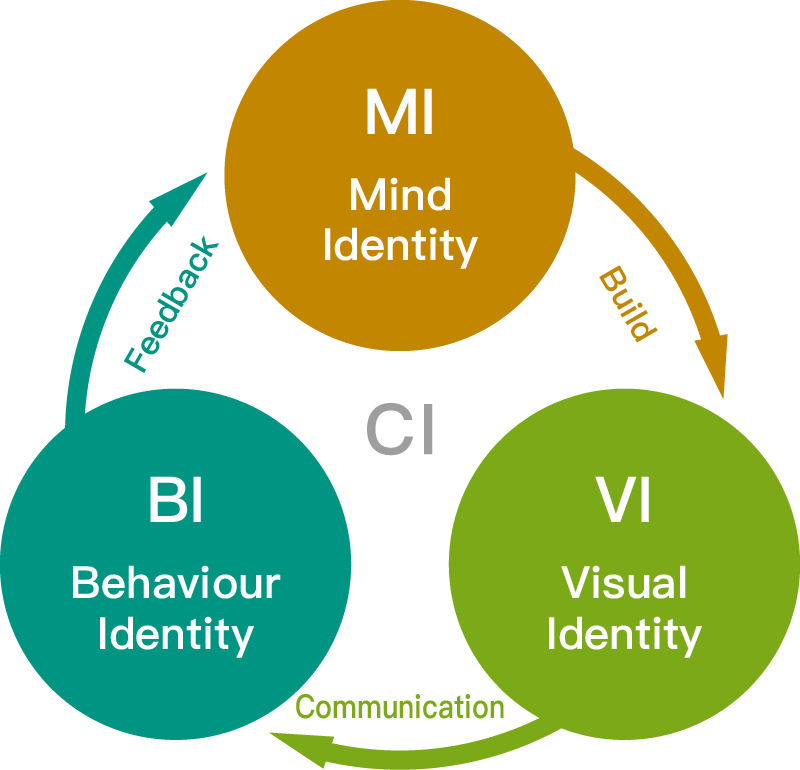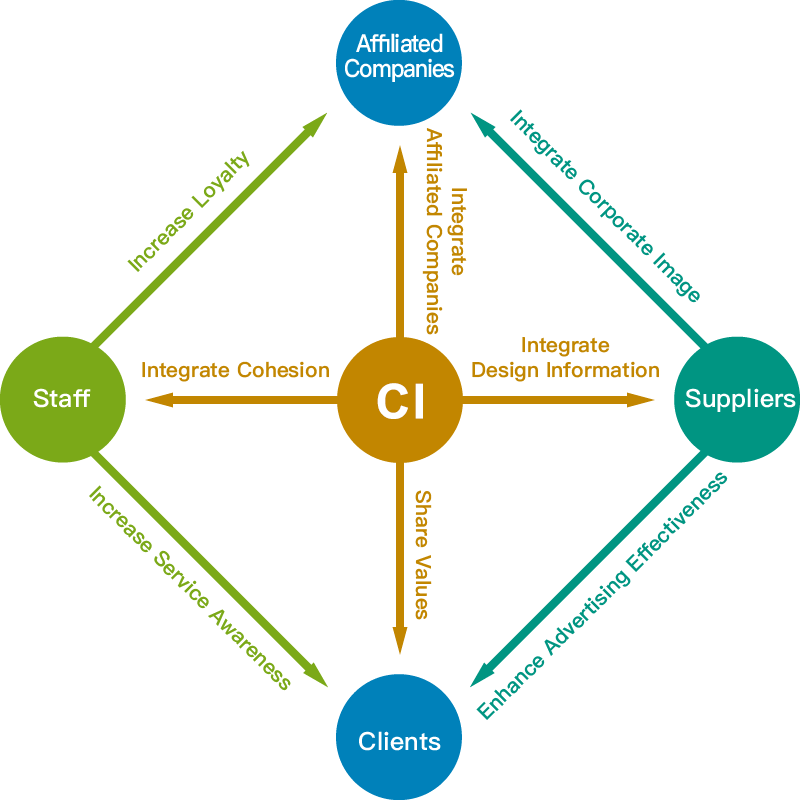What is a Corporate Identity System (CIS)?
The Corporate Identity System (CIS) is a strategic and structured system that helps companies establish, manage, and maintain their brand identity across all platforms. Central to this system is CI design, which plays a critical role in shaping how a brand is visually and conceptually presented. From visual consistency to brand storytelling, CI design ensures that all brand expressions—from logos to tone of voice—align with the company’s values and personality.
In today’s competitive landscape, a strong, coherent identity supported by high-quality CI design is essential for building trust and long-lasting brand value.

The Core Elements of CIS: MI, VI, and BI
MI – Mind Identity
Mind Identity defines the core values, mission, and internal culture of a company. It reflects the company’s long-term vision, guiding its behaviors and strategies. Through MI, the CI design process captures the brand’s essence, enabling clear differentiation and emotional resonance with stakeholders.
VI – Visual Identity
Visual Identity is the most tangible part of CI design. It includes logos, brand colors, typography, and graphic systems that make a brand visually recognizable. Consistent use of these elements across packaging, advertising, and digital media helps build a memorable and trustworthy brand presence.
BI – Behavioral Identity
Behavioral Identity focuses on how a company interacts with customers, partners, and employees. From service attitudes to communication style, BI ensures that every touchpoint reflects the brand’s core values. When integrated into CI design, behavioral guidelines reinforce credibility and strengthen customer relationships.
Together, MI, VI, and BI form the foundation of a unified CI design strategy, helping brands express themselves consistently and powerfully.

CI Design in Practice: Components of the CIS Identity System
An effective CI design system integrates various components to maintain a consistent and recognizable brand image:
- Logo: The visual centerpiece of the brand that reflects its identity and core values.
- Standard Color: Carefully selected color palettes that evoke emotion and improve visual recall.
- Standard font: Defined fonts and type systems that align with the brand tone.
- Slogan: A concise expression of the brand’s mission and values.
- Visual Elements: Shapes, icons, or illustrations that support the visual language.
- Commercial Photography: Branded imagery that reinforces professionalism and personality.
- Stationery: Unified templates for documents like letterheads, business cards, and reports.
- Advertisements: Visual design rules for posters, banners, and social content.
- Packaging: Design standards for product packaging aligned with brand aesthetics.
- Website: Digital presence guidelines for layout, UI elements, and brand visuals.
- Usage Guidelines: Rules for using brand assets consistently across internal and external media.
- Employee Training Manual: Guides staff on how to represent the brand behaviorally and visually.
Why CI Design Matters for Your Brand
A well-structured CI design not only elevates your brand’s image but also drives its long-term success. Here’s how it helps:
- Builds a recognizable brand image
- Enhances brand value and credibility
- Increases competitive differentiation
- Communicates corporate culture clearly
- Strengthens employee alignment and cohesion
In essence, strategic CI design is more than just visual styling—it’s the blueprint for your brand’s growth, perception, and sustainability in the market.
If you would like to learn more about brand design, feel free to contact us for the following services: Taichung Brand Design Company, Taichung Logo Design Company, Taichung Website Design Company, Taichung Web Design Company, Taichung Graphic Design Company, Taichung Visual Design Company, Taichung Advertising Design Company, Taichung Catalog Design Company, Taichung Packaging Design Company, Taichung Commercial Photography Company, Taichung Video Production Company, Taichung CI Design Company
